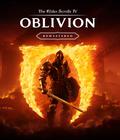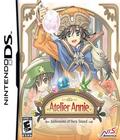Atelier Annie: Alchemists of Sera Island is not your usual kind of RPG. The game stars Annie, the daughter of two famous alchemists, but she is far from a respectful daughter and is a bit of a disappointment. She's selfish, grumpy and lazy, and her ultimate goal is life is to find a rich man to marry so she never has to work a day in her life. Understandably, her family isn't very happy about this. One night, while Annie is asleep, they sneak her out of the house and transport her to Sera Island, which hosts an alchemy contest. Groups of alchemists have turned the sleepy little island into a successful resort town. The winner will get a tremendous cash prize, the chance to become Royal Alchemist, and she may even be able to marry the prince of a local kingdom. Annie may be a lazy gold digger, but she knows an opportunity when she sees one and sets out to learn alchemy and win the contest. Along the way, she'll interact with the various inhabitants of Sera Island and the other contestants. Maybe she'll even grow up a bit and learn that there is more to life than money and fun.
Atelier Annie is less of a game and more of a visual novel. It does feature gameplay, but that takes a back seat to the character interaction. Regardless of where you go and what you do, you're going to spend a lot of time watching the characters talk to each other. This is going to be what makes or breaks the game for players. If you enjoy watching the characters interact with one another, then you'll probably enjoy Atelier Annie. If you don't, then there isn't much reason to play. You can fast-forward through the game's numerous cut scenes, but without them, the game feels short, bland and empty. There is some satisfaction to be found in earning one of the game's numerous endings, but even that depends heavily on wanting to see more of the characters and what happens to them. A slightly awkward translation slightly sours the experience, although it is actually a step up from some of NISA's other recent attempts.
Your goal in Atelier Annie is not to save the world, solve a mystery or anything that epic; your goal is to turn Sera Island into a thriving resort. To do so, you'll have to build various shops, amusement parks and museums to attract visitors to the island. Increasing your supply of buildings is fairly easy. Every few months, the game will give you a contest, which is a special request from the island committee, and winning this contest earns you money that can only be used to buy new attractions for Sera Island. Once you've built an attraction, you can visit it at any time and take on assignments from the owner. Completing the jobs raises the overall fame of your attraction, and if the Fame is high enough, you'll be able to pay extra money to upgrade the building.
Aside from that, the buildings are generally self-sufficient. The owner may sometimes require you to play a stylus-based mini-game if you visit, but that is simply a chance to earn extra Fame. At the end of every month, your building's fame will be measured, and you'll earn additional money based on the Fame and level of your building. The real challenge is that you're on a time limit. Every action you take, whether it's visiting one of your shops or creating items to fulfill their requests, takes time. The entire game is on a time limit, so you must make careful use of each day. If you waste too much time wandering around, you won't have time to finish everything.
Atelier Annie's biggest problem is that the sim elements are not very interesting. Your customization options are woefully limited. You can assign a single clerk to run your shops, and he or she can help you improve the profits from a certain kind of resort attraction. For example, Hans is really good at art attractions, while Fitz can run a shop well but hates anything involving small children. You can technically issue orders that make them function better at their weaknesses, but there is no reason to. It makes the clerk like Annie less, so you're better off switching to another clerk because character friendship determines your ending. For a game so heavily built on synthesis and item creation, there isn't anything to it as far as the shops go. As long as you're completing the quests for your various attractions, they'll get better. There's no real simulation element, despite billing itself as a simulation RPG. You can't improve your shop's selection through clever synthesis, create special rare items to display in the museum or even make better rooms for the hotel. All you can do is complete seemingly arbitrary jobs and watch your numbers go up with minimal input from you.
Atelier Annie is technically an RPG, but only technically. In order to get items for synthesis, you have to venture out to parts of the island, and while you're out gathering items, you'll occasionally be attacked by random enemies. The combat system feels like an afterthought and is very mind-numbingly basic. You and the enemy hit each other until one of you falls down. The only real "gimmick" involved is that you can position units in the front row or back row. Characters in the front row do more damage and take more damage, and the opposite is true for the back row, where you have greater defense and less attack power. This is the extent of the combat system that you'll need to know. Indeed, most combat in the game can be easily won by holding the Y button, which automatically fast-forwards through combat by repeatedly choosing attack. Even enemies who were drastically above my character's levels could be defeated this way, and the only reason I noticed that I was in a dangerous area was because I gained six levels after defeating an enemy. There's really no reason to buy Atelier Annie for its RPG element, which resembles more of a tacked-on mini-game than any sort of combat engine; the game would have been better off without it.
Instead, most of your time in the game is going to be spent on synthesis, which is exceedingly simple, although it has some interesting nods toward complexity. Once you find a recipe for an item, either as a purchase or gift, you can create it. You go to your workshop, select the recipe, and if you have the correct items, you can make the item. However, there is a degree of success to the item you create. The more complex the item, the more likely it is that you'll fail to make the item and end up generating something nearly worthless instead. Fortunately, you can alter your success rate by changing the alchemy tool used to create the item. A cauldron may be good for certain items, but you may want to use a magical alchemist egg for another. Depending on the item you use, your chance for success goes up or down. Every time you successfully use an item, both Annie and the item gain experience. Earn enough experience, and Annie or the item may level up. Leveling up improves the success rate of your alchemy and gives you a chance to make extras of the item you're attempting to create. Each item you create takes a certain number of days, depending on the item's quality and quantity.
The real complexity comes in the form of trying to add "traits" to items. Most items begin with the "Normal" trait, but there are 16 other traits that you can add, ranging from colors like red and blue to more unusual attributes, like powerful or big. Adding a trait to an item is a bit confusing. You can attempt to create the item by using synthesis material that already has that attribute. Using a big item increases the chance that your created item's attribute will be big, for example. You can also create supplements, which can be added to a synthesis to change the eventual trait. Finally, you can use an almanac item, which allows you to add a trait if you have the corresponding almanac.
Traits are essential to getting good endings in Atelier Annie. Your overall goal in the game is to complete jobs. Some jobs are given to you by the local Adventurer's Guild, some by the businesses you create, and others by the island's contest committee. Almost all of these jobs require you to create a certain item with a certain trait. You can technically succeed at these requests just by giving them the default item, but you'll receive a lesser reward. In order to succeed at the game and earn the best possible endings, you have to make sure you're giving the correct traits instead of the default item. Traits also have a minor influence on combat. Instead of the usual elemental weaknesses found in RPGs, each enemy in the game has a weakness to a specific trait, so equipping a "quality" sword or a "red" sword can make it easier to kill certain enemies. Combat is so easy that you'll probably never bother with this, though. Killing enemies faster is only a benefit if you're going into areas that are way above your character's level.
Atelier Annie is not a very impressive-looking game. Most of the visuals are static pictures that change from time to time, and none of them are as charming or detailed as other Nintendo DS titles. Far more disappointing are the character sprites. Atelier Annie uses a "super deformed" style that is so deformed that they're almost unrecognizable, and their combat and movement animations are extremely boring and poorly done. Considering that there are other Nintendo DS games that use the SD art style much better, it's really surprising that the normally lovely Gust sprites are replaced by these extremely bland visuals. The entire game looks like an early SNES title, but not in the good retro sort of way. The soundtrack is better, although it doesn't stand out very much. Like Atlus' recent Endless Frontier, Atelier Annie doesn't feature an English dub option, although the game is almost fully voice-acted. This means that all the voice acting is in Japanese, which could be a plus or a minus, depending on your personal preference.
Atelier Annie: Alchemists of Sera Island doesn't really feel like a full-fledged game. It has gameplay elements, but they almost universally feel like mini-games instead of parts of an actual game. Everything, from the combat to the alchemy, feels very simplistic, and seems to exist as an excuse to give you wacky cut scenes. There is a certain addictive quality to creating the perfect item, but once you master the game's alchemy system, you'll find that it quickly loses its charm. Atelier Annie's is mostly a game for those who want to watch silly anime-style characters interact in a zany manner for 10-15 hours. If Atelier Annie manages to grab you, it offers a substantial amount of content, including a significant number of endings. Anyone looking for an actual game can find much better on the Nintendo DS, and Atelier Annie has little to recommend it to anyone but die-hard NISA fans.
Score: 6.5/10
More articles about Atelier Annie: Alchemists of Sera Island











 Atelier Annie adopts a unique sim-based SRPG system. Characters will explore the world for alchemic items and to participate in an island resort development project. As the head of an alchemy resort, you must go on quests to collect, create and sell alchemy items to arriving customers and make the resort prosperous.
Atelier Annie adopts a unique sim-based SRPG system. Characters will explore the world for alchemic items and to participate in an island resort development project. As the head of an alchemy resort, you must go on quests to collect, create and sell alchemy items to arriving customers and make the resort prosperous.



























